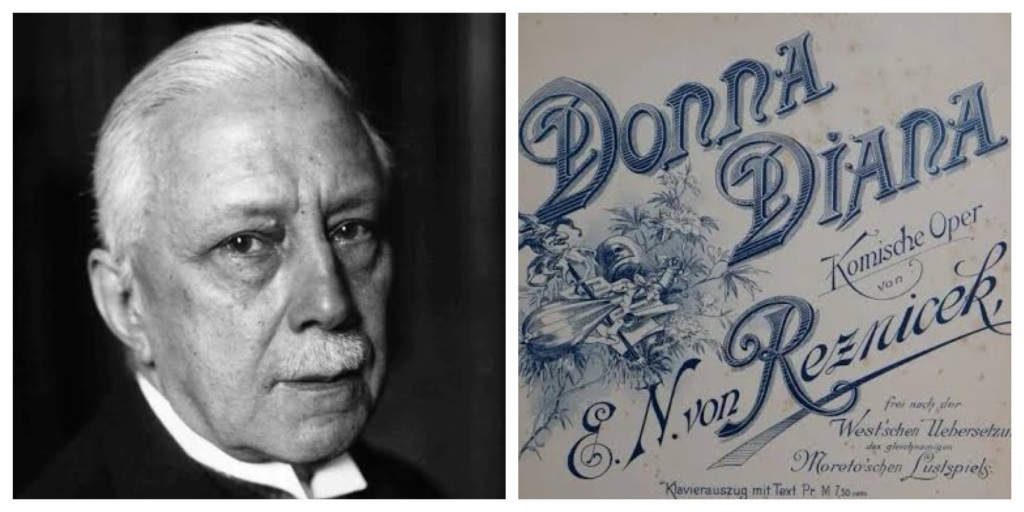Overtures are popular pieces with concert goers the world over. The overtures to The Marriage of Figaro, The Magic Flute and William Tell receive regular performances but what about many of the other overtures that are hardly performed at all? In this edition of In Conversation we look at some great overtures that are worth hearing…
Carl Maria Weber (1786-1826)
Overture to Euryanthe Op 81
London Symphony Orchestra
John Eliot Gardner (conductor)
Emil Nikolaus von Reznicek (1860-1945)
Donna Diana: Overture
Vienna State Opera Orchestra
Hermann Scherchen (conductor)
Nikolai Rimsky-Korsakov (1844-1908)
Overture The Tsar’s Bride
Mariinsky Orchestra
Valery Gergiev (conductor)
Giuseppe Verdi (1813-1901)
Luisa Miller: Overture
Orchestra of the Royal Opera House, Covent Garden
Lorin Maazel (conductor)

Carl Maria von Weber was a German composer, conductor and virtuoso pianist and was a crucial figure in the development of German Romantic Opera. His mature operas including Der Freischütz (1821), Euryanthe (1823) and Oberon (1826) had a major impact on subsequent German composers including Marschner, Meyerbeer, and Wagner; his compositions for piano influenced those of Mendelssohn, Chopin and Liszt. Euryanthe is a German grand heroic-romantic opera premiered on 25 October 1823. It is acknowledged as one of Weber’s most important operas but the work is rarely staged because of the weak libretto by Helmina von Chézy. Euryanthe is based on a 13th-century French romance but only the overture, an outstanding example of the early German Romantic style (heralding Richard Wagner), is played today.

Emil Nikolaus von Reznicek was especially productive as a composer of operas, the most famous of which was Donna Diana (composed in 1894, revised in 1908 and again in 1933). He also composed orchestral music including five symphonies, chamber music, organ works, and religious works for chorus. Born in Vienna on May 4th 1860, he became active as a conductor, beginning in Graz and gradually moving into increasingly important centers of activity including Mainz, Berlin, Prague, Weimar and Warsaw between 1884-1909. His exact contemporary, Gustav Mahler, who was born less than two months after Reznicek, was active in similar venues including Berlin, Prague and Weimar, where both worked between 1886 and 1907. While Mahler devoted himself less to operatic compositions than Reznicek did, both of them contributed heavily to the symphonic repertoire. Mahler composed ten symphonies (the last semi-finished) and two additional symphonic movement whereas Reznicek composed five symphonies. Donna Diana is a comic opera based on the Spanish comedy Disdain with Disdain by Agustín Cavana. It was first performed on 16th December 1894 in Prague. The opera was successful in its day, with productions in several German theatres, but is rarely performed today although the overture has been recorded and is very occasionally heard in the concert hall.

The Tsar’s Bride is Rimsky-Korsakov’s tenth opera. He himself said of the opera that he intended it as a reaction against the ideas of Richard Wagner, and to be in the style of “cantilena par excellence”. The Tsar’s Bride is a repertory opera in Russia, although it is not part of the standard operatic repertoire in the West. In an 1825 book, Russian historian Ivan Karamzin describes how Tsar Ivan the Terrible chose his third bride, Marfa Sobakina, out of over two thousand women. Marfa died two weeks after the wedding involving treachery and poison. Although The Tsar’s Bride was planned to be performed in the Imperial Theatres, it had to receive its premiere at a small theatre under private sponsorship. On October 30, 1901, nearly two years after its first performance, it finally appeared on the Imperial stage.

Based on Schiller’s Intrigue and Love, the play is a convoluted web of seedy Teutonic politics but Verdi distills it down to a love affair, producing what is generally considered his most underestimated opera. The first performance was given on 8 December 1849 and it is different to any of his previous works and far more akin to his later operas. Luisa Miller was Verdi’s 15th opera and marked a shift in focus from the more political statements found in his earlier works to one of relationships and all of the complications that arise. In addition he began to explore orchestral timbres and musical motives in greater detail. The theme of the Overture is based on the opening scene from Act III, where Luisa and the chorus sing Come in un giorno solo while she writes a letter before taking the fatal poison. In Act III the theme is in 3/4 time whereas in the Overture, Verdi presents the theme in 4/4 time and with a change in tempo.
